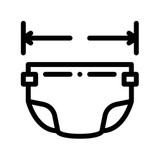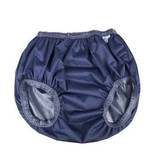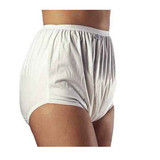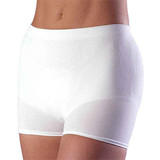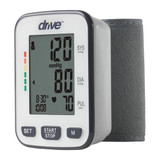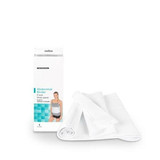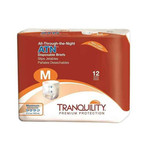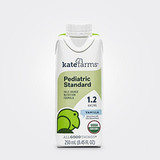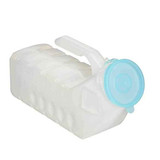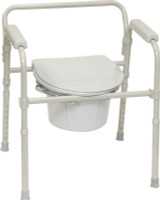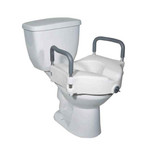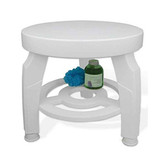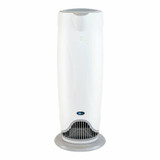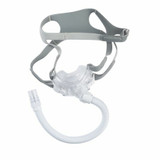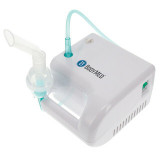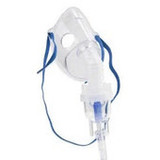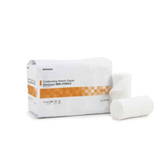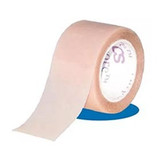
The Compounded Conundrum - Incontinence & Enlarged Prostate
Imagine sitting at a seaside tavern sipping an ice-cold beverage and nibbling on a dipped cheesy breadstick when you’re suddenly overcome by an overwhelming urge to urinate. You jump up and rush to the restroom, but before you can even open the door, you feel the warm sensation of an embarrassing leak.
Sadly, this is a common reality for millions of older adults. The phenomenon is called Urge Incontinence and is fairly common among older men. In general, incontinence is far more prevalent among women, affecting between 24% and 45% of women over 30, according to a study by Linh N. Tran and Yana Puckett, compared to around 20% of men. (Estimates vary widely due to differences in definitions and survey methodologies.)
The key difference is that in women, stress incontinence is the dominant type due to physiological factors, pregnancy and childbirth, while in men, urge incontinence is the most common, in large measure, due to enlarged prostate issues. Let’s take an in-depth look into this unholy alliance of incontinence and a dodgy prostate.
Understanding Male Plumbing
Before we look into the connection between these conditions in greater depth, let's get a basic understanding of the plumbing involved. The male urinary system comprises the bladder, a muscular sac that stores urine; the urethra, a tube that carries urine from the bladder out of the body; and the prostate gland, a walnut-sized gland located just below the bladder and surrounding the urethra. The prostate plays a vital role in the male reproductive system.
As men age, the prostate gland tends to enlarge, a condition known as benign prostatic hyperplasia (BPH). While not life-threatening, BPH can press on the urethra, pinching the tube and restricting the flow of urine. This creates a number of issues that cause or worsen incontinence.
The Prostate Effect
There are different types of incontinence, each with unique symptoms and each affected by an enlarged prostate in their own way:
Urge incontinence: This is the type most affected by the prostate. It manifests as a sudden and intense urge to urinate, often accompanied by involuntary leakage. This happens when the prostate presses against the bladder, increasing pressure and forcing urine out. The bladder can also become irritated, triggering contractions even when it isn’t full.
Stress incontinence: Leaks occur during activities that increase abdominal pressure, such as coughing, sneezing, laughing, or lifting heavy objects. Stress incontinence affects women more than men, but for men, a weakened pelvic floor due to BPH can contribute to this type of leakage.
Overflow incontinence: This can happen when the bladder muscles become weak, or the urethra is blocked, making it difficult to empty the bladder completely. In addition, constant straining due to BPH can weaken the pelvic floor muscles, contributing to incomplete bladder emptying and overflow incontinence.
The Toxic Tango
Incontinence and an enlarged prostate can sometimes appear to be engaging in some kind of conspiratorial collaboration. An enlarged prostate due to BPH can pinch the urethra, making it difficult to urinate and also weakening the pelvic floor muscles. The consequent straining then puts additional pressure on the prostate, potentially exacerbating the BPH symptoms. And around and around we go.
In addition, failing to empty the bladder completely can contribute to urinary tract infections (UTIs), which can irritate the prostate. This further worsens BPH symptoms and can potentially lead to urge or overflow incontinence.
Shrugging off the Shackles
Experiencing incontinence and prostate issues, whether together or individually, need not be doom and gloom. Fortunately, there are many options available to treat or manage both of these conditions.
Diagnosis and Treatment: As with any health condition or concern, the first step has to be consulting a healthcare professional. They will perform a physical examination, discuss your symptoms, and order appropriate such as urine analysis or urodynamic studies to assess bladder function.
For an enlarged prostate, an abdominal ultrasound usually determines whether any enlargement exceeds the norm for your age and whether further tests may be required. Treatment options depend on the specific type and severity of incontinence and prostate issues. In some cases, a multi-pronged treatment plan may be appropriate.
Lifestyle Modifications: Whatever treatment plan or therapy is decided upon, appropriate lifestyle changes must always be the very first step in addressing a health condition. Following a healthy diet, maintaining a healthy weight, and exercising regularly can significantly improve both incontinence and prostate health.
A study published in the National Institutes of Health Journal found that even a 5-10% weight loss can lead to a substantial reduction in incontinence episodes, while another research report published in the National Library of Medicine demonstrates a clear correlation between Body Mass Index (BMI) and prostate volume.
Pelvic Floor Muscle Exercises (Kegels): These exercises strengthen the muscles that support the bladder and urethra, improving control over urination. You may need a healthcare professional to guide you at first, but once you get the hang of it, you can do the exercises anywhere, anytime.
Bladder Training: This technique involves retraining the bladder to hold urine for longer periods. It might involve strategies like scheduled toileting, where you urinate at specific intervals throughout the day, even if you don't feel a strong urge. Another technique involves gradually increasing the time between bathroom visits.
Medical Interventions: Depending on the severity, medication, minimally invasive procedures, or surgery might be considered for both incontinence and BPH. For BPH, minimally invasive procedures like prostate artery embolization (PAE) or microwave therapy can be performed to shrink the prostate, or, in more severe cases, part of the prostate gland can be removed surgically. For more information on surgical options for incontinence, read this article.
Mental and Emotional Well-being: The effects of incontinence and an enlarged prostate can, and often do, affect psychological health. It’s important to be proactive and to build a support structure to help you cope. Confide in trusted family and friends or join support groups specifically focused on these conditions. Start by looking at organizations like the Simon Foundation for Continence and the American Urological Association.
Conclusion
Experiencing either incontinence or an enlarged prostate can be enough of a challenge, but facing both at the same time would be almost devastating for some men. At LL Medico, we understand the health issues that older people have to contend with. We have supported thousands of customers over almost thirty years in this field.
While on your journey of recovery, let LL Medico look after all your senior care requirements. For the best quality adult diapers, urology supplies or personal care requisites, call today at (855) 422-4556 or email [email protected]. We’re here to support you while you take on the task of seizing back your quality of life. In the words of adventurer and story-teller Bob Bitchin, "The difference between an ordeal and an adventure is attitude."






